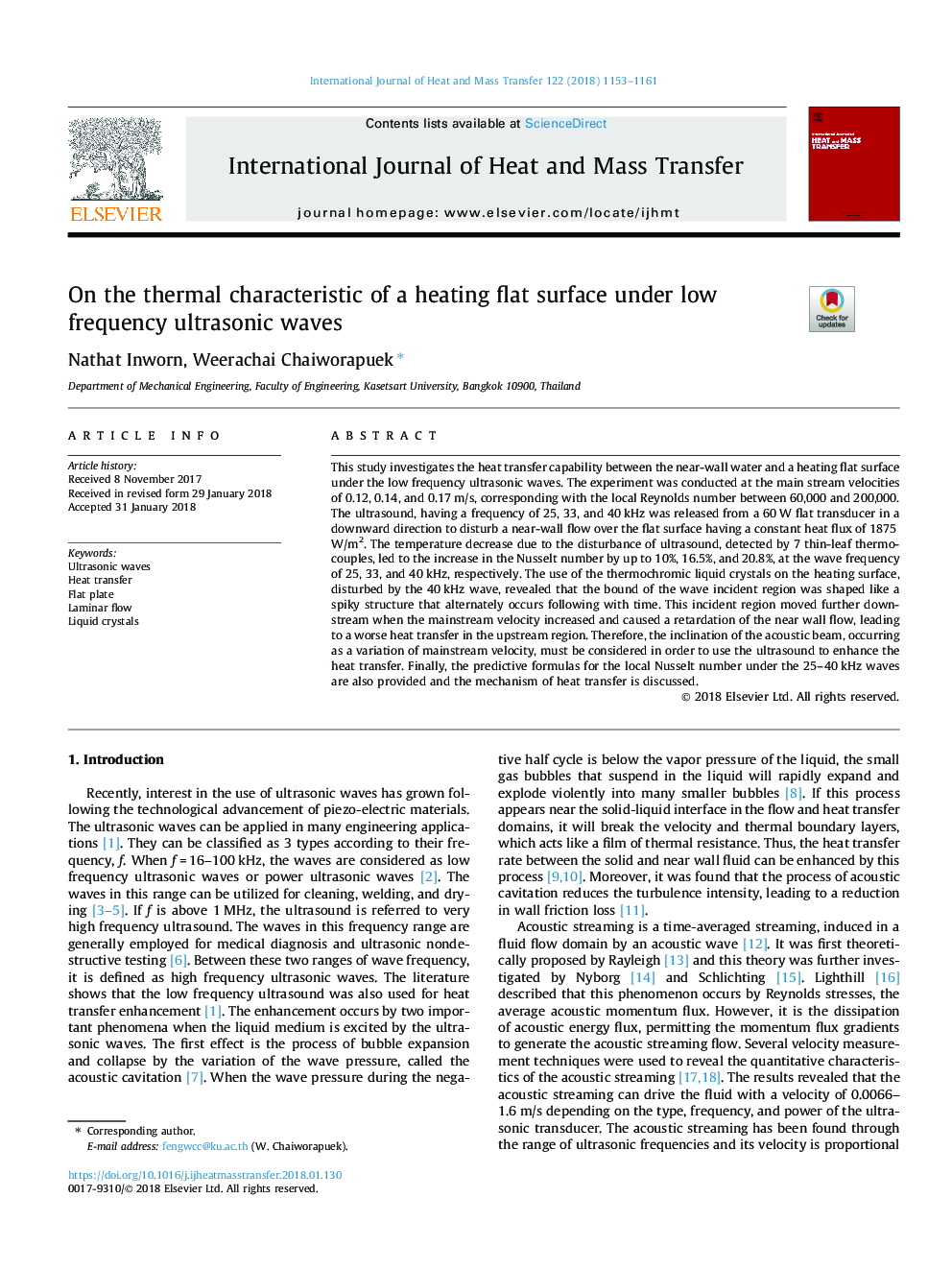| Article ID | Journal | Published Year | Pages | File Type |
|---|---|---|---|---|
| 7054477 | International Journal of Heat and Mass Transfer | 2018 | 9 Pages |
Abstract
This study investigates the heat transfer capability between the near-wall water and a heating flat surface under the low frequency ultrasonic waves. The experiment was conducted at the main stream velocities of 0.12, 0.14, and 0.17â¯m/s, corresponding with the local Reynolds number between 60,000 and 200,000. The ultrasound, having a frequency of 25, 33, and 40â¯kHz was released from a 60â¯W flat transducer in a downward direction to disturb a near-wall flow over the flat surface having a constant heat flux of 1875â¯W/m2. The temperature decrease due to the disturbance of ultrasound, detected by 7 thin-leaf thermocouples, led to the increase in the Nusselt number by up to 10%, 16.5%, and 20.8%, at the wave frequency of 25, 33, and 40â¯kHz, respectively. The use of the thermochromic liquid crystals on the heating surface, disturbed by the 40â¯kHz wave, revealed that the bound of the wave incident region was shaped like a spiky structure that alternately occurs following with time. This incident region moved further downstream when the mainstream velocity increased and caused a retardation of the near wall flow, leading to a worse heat transfer in the upstream region. Therefore, the inclination of the acoustic beam, occurring as a variation of mainstream velocity, must be considered in order to use the ultrasound to enhance the heat transfer. Finally, the predictive formulas for the local Nusselt number under the 25-40â¯kHz waves are also provided and the mechanism of heat transfer is discussed.
Related Topics
Physical Sciences and Engineering
Chemical Engineering
Fluid Flow and Transfer Processes
Authors
Nathat Inworn, Weerachai Chaiworapuek,
